#Yvette Shepard
Text

Attack of the Giant Leeches (1959)
AKA Giant Leeches, Demons of the Swamp, She Demons of the Swamp
#attack of the giant leeches#yvette vickers#ken clark#jan shepard#aip#1950s movies#bernard l. kowalski#horror movie poster
116 notes
·
View notes
Text
youtube
‘Good Times’ Sets Ranada Shepard As Showrunner; JB Smoove, Yvette Nicole Brown & Jay Pharoah To Star In Netflix’s Animated Reboot



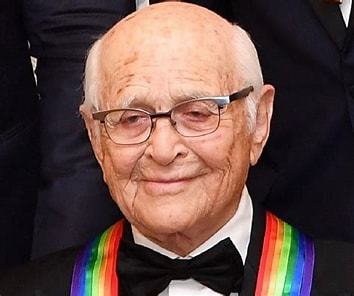

Conclusion? OBNOXIOUS, ARROGANT, IGNORANT
Black people are increasingly over the Blackface, Anti bullshit, coming out of companies like Netflix and HULU and they are also increasingly OVER the Black actors and actresses, stepping up to do minstrel roles.
BE WARNED... HOLLYWOOD IS NOT THE ONLY ONE WHO HAS STARTED A WAR AGAINST ACTORS. YOU WANT TO SELL OUT? GO AHEAD. BUT DON'T ACT SHOCKED WHEM THE PUBLIC NO LONGER KISSES YOUR ASS FOR IT.
youtube
Proof positive that corporations like Microsoft, under the guise of DEI, filled their ranks with activist employees from Leftist, Misandrist and Queer groups. That most of these spoiled shit stirrers are young white women (with a couple of black girls thrown in for some peppery spice) should tell men exactly what they're about: Authoritarianism. They'll do anything to hurt people in general, and the economy, in particular. Meantime, like clockwork, the GOP are blaming the failures of DEI off of the very people who never actually had control of it. Progressives always did, including black boule style race traitors. They are deliberately causing divisions with their Diversity Cosplay.
#Youtube#Jules Hardy#Wil Wheaton#Top Gear#Sweet Baby Inc#DEI Terrorists/Spoiled Beheader Crew=SAME#Leftists#Misandrists#Queer#White Women Go After White Men In Gaslighting Effort#Women's Rights Are In Reality Under Attack#Leftists Are Simply Too Sick To Care#Ranada Shepard aka The New Shonda Rhimes#Yvette Nicole Brown#Steph Curry#JB Smoove#Jay Pharoah#seth mcfarlane#Norman Lear#Wanda Sykes#NETFLIX#HULU#MINSTREL SHOWS 2024#Tiffany Byrd Harrison#Time For Both Companies AND Artists To Take Responsibility For The Art They Choose To Put Out#David Allen Greer#Head Minstrel#Disney#Marvel#Gaming Industry Is Being Detroyed By Progressive Activists
3 notes
·
View notes
Text




youtube
Attack of the Giant Leeches (1959)
My rating: 6/10
I mean, the monsters are a bit crap and there isn't enough of them, but they actually tried to put some plot and characters into this thing, so that's something.
#Attack of the Giant Leeches#Bernard L. Kowalski#Leo Gordon#Ken Clark#Yvette Vickers#Jan Shepard#Youtube
2 notes
·
View notes
Audio
Let us share some leech facts to prepare you for ATTACK OF THE GIANT LEECHES (1959) from director Bernard L. Kowalski and starring Ken Clark, Yvette Vickers and Bruno VeSota!
Everyone is a terrible person in this barely horror creature feature.
Context setting 00:00; Synopsis 18:53; Discussion 24:34; Ranking 38:32
#horror#podcast#leeches#attack of the giant leeches#bernard l kowalski#roger corman#gene corman#leo gordon#ken clark#yvette vickers#jan shepard#tyler mcvey#bruno vesota#john m nickolaus jr#carlo lodato#alexander laszlo#balboa productions#american international pictures#aip#giant leeches#mystery science theater 3000#mst3k
3 notes
·
View notes
Photo

Attack Of The Giant Leeches (1959).
Dir: Bernard L. Kowalski
Starring: Ken Clark, Yvette Vickers, and Jan Shepard.
IMDB Synopsis: A backwoods game warden and a local doctor discover that giant leeches are responsible for disappearances and deaths in a local swamp, but the local police don't believe them.
2 notes
·
View notes
Text
1 note
·
View note
Text
youtube
Attack of the Giant Leeches (1959)
Fear will pierce your flesh…. Until every nerve in your body… EXPLODES!
A slimy chiller about a huge leech-infested swamp where the leeches begin preying on human flesh. A game warden and a local doctor discover that giant leeches are responsible for the disappearances and deaths in a local swamp, but the local police don't believe them.
Director: Bernard L. Kowalski
Writers: Leo Gordon
Producers: Roger Corman, Gene Corman
Starring: Ken Clark, Yvette Vickers, Jan Shepard
Budget: $70,000
0 notes
Text
Just for fun I’m gonna write this post about what my DA peeps would be in DnD 5e
Fyfa Mahariel: Rogue, Scout archetype, wood elf. If Assassin were a class of its own she’d multiclass after meeting Zevran
Idina Surana: Sorcerer/Druid multiclass, Storm Sorcery origin/Circle of Dreams, elf. Took a feat to let herself wield a sword
Sutton Cousland: Fighter, Eldritch Knight archetype, Defense style, human. Is fascinated enough by magic to be an Eldritch Knight but not pious enough to be a Paladin
Ilse Aeducan: Paladin (Torm), Oath of the Crown, gold dwarf. Almost changed her oath to Vengeance in a fit of passion, but decided against it
Nisaleigh Hawke: Rogue/Monk multiclass, Mastermind archetype/ Way of the Shadow, half-elf. Could have been an Arcane Trickster but she likes her stealth too much
Mnuve Lavellan: Druid/Warlock multiclass, Circle of the Land (Coast)/ Pact of the Blade (Great Old One patron), wood elf. The pact is broken when she loses the Mark in Trespasser
Isador Surana: Wizard, School of the Artificer, sun elf. Proficient with the Healer’s kit, took a feat to be able to cast a couple cleric spells
Evan Surana: Bard, College of Lore, half-elf. His bardic focus is either a pan flute or another wind instrument
(Bonus) Yvette Shepard: Sorcerer, Shadow Magic origin, idk what race she’d be but she wouldn’t be human
#Isador was almost a sorcerer too but I couldn't settle on an origin that I liked for him#Also I'm cheating a little with Fyfa because she's already an AU version of Fyf#DnD talk#Fyfa Mahariel#Idina Surana#Sutton Cousland#Ilse Aeducan#Nisaleigh Hawke#Mnuve Lavellan#Isador Surana#Evan Surana#Yvette Shepard#Also straight up I've had the idea of Evan being a Bard in my head for months#QR talk
7 notes
·
View notes
Photo

Attack of the Giant Leeches - 1959
Directed by: Bernard L. Kowalski
Starring: Ken Clark, Yvette Vickers & Jan Shepard
#attack of the giant leeches 1959#bernard l. kowalski#ken clark#yvette vickers#jan shepard#attack of the giant leeches 1959 movie poster#vintage movie poster#1950s horror#50s horror#attack of the giant leeches#queen-of-mothra
160 notes
·
View notes
Text
Netflix’s Viewership Data On ‘Shadow And Bone’ & Other Cancellations – Deadline
Netflix’s Viewership Data Provides Glimpse Into Renewal Decisions: ‘Shadow And Bone’ Was Most Watched Canceled Series In First Half Of 2023
Nellie Andreeva
December 12, 2023
Streaming giant Netflix has always said that the decisions whether to renew a show or not are based on performance vs. cost. The release today of What We Watched, a Netflix report on global viewed hours for 18,000 titles — original and licensed — from January to June of 2023 provides context on the calls the streamer made for seasons that debuted during that period.
It won’t come as much of a consolation to Shadow and Bone fans, who are still reeling from the fantasy drama’s cancellation after two seasons, but it was the most watched English-language scripted series from that period to get the axe, amassing 192.9M hours viewed from its March 16 debut through end of June to rank #26.
Headshots of (L-R) Ranada Shepard, JB Smoove, Yvette Nicole Brown & Jay Pharoah
Casting
'Good Times' Sets Ranada Shepard As Showrunner; JB Smoove, Yvette Nicole Brown & Jay Pharoah To Star In Netflix's Animated Reboot
Shadow and Bone was one of five series Netflix opted not to continue in November, along with Glamorous and adult animated comedies Agent Elvis, Farzar and Captain Fall. The decision came on the heels of the double Hollywood strikes, which scrambled networks and streamers’ scheduling plans, with shows missing their projected launches to create long gaps between seasons and a pipeline logjam for late 2024 and 2025.
Strike-related delays and the high price tag of Shadow and Bone likely played a role in its demise, despite it also spawning a video game franchise for Netflix.
And while there are other factors beyond performance determining each show’s fate, including cost and awards attention, the streamer’s report reveals Shadow and Bone‘s viewership levels as an approximate threshold for hourlong English-language series from that period to get renewed. (Because data is based on hours viewed, comedies can draw half as many hours for a similar level of performance.)
All series above Shadow and Bone eligible for renewal have been picked up for another season, including Vikings: Valhalla (#22, 205.5M), whose upcoming third season will be its last.
The first new season below Shadow and Bone S2, Sweet Tooth (S2, #28) which posted 182.3M hours, has been renewed for a third and final season. The next English-language scripted series, Sex/Life S2 (#31, 175.5M) has been canceled, as were other dramas lower on the list whose seasons launched within the January-June window.
Data for Glamorous is skewed as it premiered in late June, drawing 36.6M hours (#484) for the first nine days of viewing within the measured period.
Netflix has been more lenient with its comedy renewals.
While That ’90s Show S1 ranked #100 with a respectable 95.1M hours viewed for a half-hour show, fellow multi-camera sitcom The Upshaws Part 3, which consisted of 8 episodes vs. 10 for the That ’70s Show sequel, ranked just below #1000 with 21.6M hours. Both have been renewed for additional installments, as has the Rob Lowe’s single-camera comedy Unstable, whose first season ranked #511 with 35.3M hours across 8 episodes.
For comparison, fellow freshman half-hour XO, Kitty (10 eps) logged 200.7M hours to rank #24, the highest for an ongoing comedy to drop a new season from Jan-June 2023.
As for Agent Elvis, featuring Matthew McConaughey as the voice of Elvis Presley, the first season of the animated comedy, which premiered in March, ranked #3306 with a paltry 5.5M hours viewed.
I knew it. Netflix lied. They said Shadow and Bone was unpopular, just to make a play at replacing it with the Queer-centered Six of Crows. I suppose it's for the best. I still enjoy the series, but after all of this, have come to notice that not one couple on that show was allowed to be happy EXCEPT the Queer one.
#NETFLIX LIED#SHADOW AND BONE WAS POPULAR#THEY CANCELLED THE THIRD SEASON FOR THE GENDER IDEOLOGY CULT#NO GOOD FEMALE REPRESENTATION ALLOWED#JUST CROSSDRESSERS
2 notes
·
View notes
Link
For just $3.99 Attack of the Giant Leeches Released in October, 1959: Giant leeches are taking their victims to an underwater cave where they feast on their blood. Directed by: Bernard L. Kowalski Written by: Leo Gordon The Actors: Ken Clark Steve Benton, Yvette Vickers Liz Walker, Jan Shepard Nan Greyson, Michael Emmet Cal Moulton, Tyler McVey Doc Greyson, Bruno VeSota Dave Walker, Gene Roth Sheriff Kovis, Dan White Porky Reed, George Cisar Lem Sawyer, Guy Buccola giant leech, Ross Sturlin giant leech, Joseph Hamilton old Sam Peters, Walter Kelley Mike Runtime: 1h 2m *** This item will be supplied on a quality disc and will be sent in a sleeve that is designed for posting CD's DVDs *** This item will be sent by 1st class post for quick delivery. Should you not receive your item within 12 working days of making payment, please contact us as it is unusual for any item to take this long to be delivered. Note: All my products are either my own work, licensed to me directly or supplied to me under a GPL/GNU License. No Trademarks, copyrights or rules have been violated by this item. This product complies withs rules on compilations, international media and downloadable media. All items are supplied on CD or DVD. On Dec-12-16 at 14:37:21 PST, seller added the following information:
0 notes
Text

FC Switcharoo!
Will Vandom (Rose Leslie): Jane Levy
Irma Lair (Lucy Hale): Maya Hawke
Adella Triton (Willa Holland): Victoria Pedretti
Cornelia Hale (Gabriella Wilde): Benedetta Porcaroli
Viv Flieger (Lauren Jauregui): Benedetta Gargari
Ariel Triton (Sophie Turner): Sophie Skelton
Bella Sullivan (Camila Cabello): Yvette Monreal
Meg Pavlis (Mila Kunis): Sarah Hyland
Richie Shepard (Adam Brody): Jack Falahee
0 notes
Photo

Non Solus, 10,645 real and imitation pearls sent to me by 147 people, my own pearls, silk thread, 9″ x 7″ x 6.5″, with table 52" x 18" x 37", 2015 on-going participatory object
Non Solus is made of thousands of pearls, both real and imitation, donated by 147 people from around the US and 13 different countries. Using the internet as a way to dispense information and make a public request, I asked for donations of a single pearl from anyone, anywhere. I received contributions from near and far, from people I know and others I have never met. Many donations included multiple pearls and many were special in some way: a grandmother’s pearl necklace; a single earring, once part of a set given as a gift from a father to a daughter; poppy seed-sized antique pearls acquired when a young Spanish jeweler befriended a retired jeweler. Some pearls came with letters, others did not. Some were packaged in tiny boxes with ribbons, while others were padded in bubble wrap.
Starting with one pearl, the sculpture grew chronologically, donation by donation as each was stitched to the next. Every pearl was photographed, observed, and recorded before it was added to the piece. Non Solus is a on-going participatory object that will never be truly completed, much like how a pearl will grow indefinitely. It is about connection, participation, and collective memory.
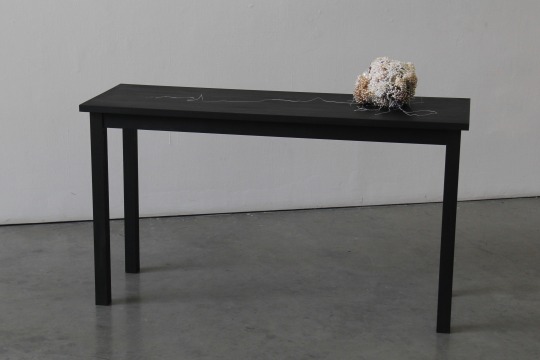
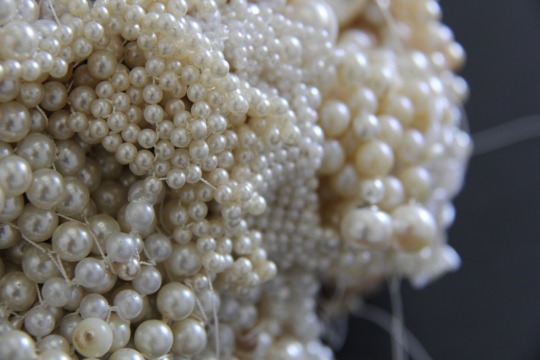
Creating this piece was very special, to say the least. I never imagined it would grow into the complex work that it become, and continues to become. When I conceived the piece two years ago and put out my first call for pearls, I really thought a handful of people would respond and that the finished work would be the size of my fist. I never thought it would come to weigh 7 pounds and measure 9″ long! I also did not think I would receive the generous outpouring of care and generosity. I was given some truly unique pearls with heartfelt stories. I often found myself in tears as I opened a new package.
Discussing it in graduate school with peers and professors allowed me to see it in different ways and to inform it or situate it within historical context (Joseph Beuys and his “social sculpture”) and various art theories, movements, and philosophies (archival art, feminism, phenomenology). Learning about these connections served to create a foundation for the work and deepened the meaning for me.
I am especially grateful to all the people who sent me pearls. I can’t begin to express in words how I feel. Thank you to each of you for being a part of this piece.
Participants
Chris Keener, Huron, OH, Terry Taylor, Candler-NC, Lisa Norton, Shoreline, WA, Renee Zettle-Sterling, Coopersville, MI, Amy Hockett, Charlotte, NC, Bonnie Lambert, Helena, MT, Lucia Tremont, Syracuse, NY, Rebbecca Tomas, Seattle, WA, Charlene Schneider, Maineville, OH, Ellen Vontillius, Swannanoa, NC, Denise McCarthy, Houston, TX, Gill Miller, Lancaster Park, England, Shannon Cobb-Tappan, Dunedin, FL, Mark Fenn, Capel Iwan, Wales, Jowita Allen, Chevy Chase, MD, Baba Barnett, Raleigh, NC, Shava Lawson, Seattle, WA, Janna and Leah Marinelli, Traveler’s Rest, SC, Kelly Johnston, Bainbridge Island, WA. Kathy Clark, Reykjavík, Iceland, Laura Siegel, Brooklyn, NY, Jannie Rozema, Wageningen, Netherlands, Rachel Ehlers, Lake Ridge, VA, Tom McCarthy, St. Louis, MO, Anastasia Young, London, England, Jane Wells Harrison, Lenoir, NC, Janet Link, Raleigh, NC, Jenny Baughman, Roswell, GA, Lisa Juen, Utica, NY, Hilary Pfeifer, Portland, OR, Susie Luyet, Paia, HI, Sarah Powell, Oberhaching, Germany, Liz Willis, Pirton, England, Philip Sajet, Amsterdam, Netherlands, Jen Townsend, Pittsford, NY, Heather Allen, Raleigh, NY, Raissa Bump, San Francisco, CA, Michael Magno, Brooklyn, NY, Casey Shepard, Los Angeles, CA, Eileen Wallace, Athens, GA, Kathy Brughelli, Middletown, RI, Marianne Dages, Philadelphia, PA, Fritz Maierhofer, Vienna, Austria, Dan Price, Chicago, IL, Mary Quin, Decatur, GA, Claire Sommers Buck, Austin, TX, Linda Callahan, Gloversille, NY, Katie Rosenthal, San Diego, CA, David Chatt, Seattle, WA, Chris Boland, Sheffield, England, Rachel Davis, Milwaukee, WI, Kris Baker, Seattle, WA, Maria Phillips, Seattle, WA, Lori Hawke-Ramin, LaFayette, NY, Michele Tuegel, St. Petersburg, FL, Kelsey Simmen, San Francisco, CA, Erin Wheeler, Johnstown, NY, Crystalyn Brennan, Brooklyn, NY, Elisa Bongfeldt, Berkeley, CA, Stephanie Voegele, Milwaukee, WI, Adrienne Smart, Arlington, TX, Susan Owen, Vilas, NC, Elizabeth Brim, Penland, NC, Meadow Thurston (in memory of), Carolina Apolonia, Middelburg, Netherlands, Rebecca Illet, Cambridge, England, Kathleen Edwards Hayslett, Coralville, IA, Madeleine Veillet, Gaspe, Quebec, Canada, Virginia Hungate-Hawk, Seattle, WA, Tracy Scott, Atlanta, GA, Michelle Smith-Lewis, Seattle, WA, Sarah Rachel Brown, Philadelphia, PA, Jenna Warburton, Seattle, WA, Paul Casey, Seattle, WA, Lisa Macutchan Gray, Seattle, WA, Lori Talcott, Seattle, WA, Catherine Chandler, Portland, OR, Stacey Mosteller and Noreen Coveny, Endicott and Richfield Springs, NY, Holinka Escudero, Mexico City, Mexico, Jane Ponsford, Esher, England, Jan Smith, Salt Spring Island, BC, Canada, Mary Wolaniuk, Boulder, CO, Christina Carlbaum, Gnarp, Sweden, Louise Perrone, Vancouver, BC Canada, Devon Matlock, San Francisco, CA, Siri Kvalfoss, Tyssedal, Norway, Claire MacDonald, Toronto, Ontario, Canada, Emily Kidson, London, England, Michele Wyckoff Smith, London, England, Tara Locklear, Raleigh, NC, Robin Kranitzky and Kim Overstreet, Richmond, VA, Natascha Bybee, Seattle, WA, Natalia Araya, Valencia, Spain, Katja Prins, Amsterdam, Netherlands, Diego Richardson Nishikuni, London, England, Andrea Wagner, Amsterdam, Netherlands, Lylli Meredith, Seattle, WA, Elle Sharifpour, San Diego, CA, Miri Admoni, Sde Tzvi, Israel, Bonnie Levinthal, Philadelphia, PA, Lien de Clercq, Antwerp, Belgium, Melody Woodnutt, Brisbane, Queensland, Australia, Katharina Schneider, Blönduós, Iceland, Karen Vanmol, Antwerp Belgium, Yvette Dibos, San Diego, CA, Devon Clark, Palm Harbor, FL, Amy Sledge, Sheung Wan, Hong Kong, Amy Bishop, Aptos, CA, Anonymous, Long Beach, CA, Anastasia Egorova Shelyakina, Illes Balears, Spain, Cathy Woodall, Hebden Bridge, West Yorkshire, England, Caitlin Skelcey, Urbana, IL, Sam Woehrmann, San Francisco, CA, Rachel Weidinger, Oakland, CA, Hilde De Decker, Antwerp, Belgium, Kit de Sousa, Randolph, NJ, Bette Schuler, Tuscon, AZ, Melissa Lyon, Sherman, NY, Susan Bolding, Hayward, CA, Catherine Chambers, Ísafjörður, Iceland, Jonis Black-Parr, Seattle, WA, Christina Shmigel, Shanghai, China/Bakersville, NC, Nikki Couppee, Oakland, CA, Sara Erkers, Gothenburg, Sweden, Dawn Nakanhishi, Soquel, CA, Kerianne Quick, San Diego, CA, Shane Prada, Baltimore, MD, Mike Holmes, San Francisco, CA, Julia Turner, San Francisco, CA, Tescia Seufferlein, Oakland, CA, Lisa Fidler, Petaluma, CA, Sharon Tavern, Richfield Springs, NY, Elísa Mjöll Guðsteinsdóttir, Reykjavík, Iceland, Brooke Marks-Swanson, South Bend, IN, Lisa Heller, Philadelphia, PA, Kathleen Browne, Ravenna, OH, Megan McGaffigan, Vancouver, WA, Maya Kini, San Francisco, CA, Maria Porges, Oakland, CA, Chelsea Poe, Oakland, CA, Liz Oppenheim, Oakland, CA, Sara Valente, Herkimer, NY, Helga Ragnhildur Mogensen, Reykjavík, Iceland, Zoe Ani, San Francisco, CA
Images by Jamee Crusan.
Thanks for reading.
14 notes
·
View notes
Photo

Horror Movie Marathon Film #9 (Disc 3, Film !)
The Attack of the Giant Leeches (1959) B&W 62 minutes, unrated
Directed by: Bernard L. Kowalski
Starring Ken Clark, Yvette Vickers, Jan Shepard
Mysterious disappearances and the strange circumstances surrounding them grip the swap patrolled by Game Warden Steve Benton. While searching the back country for illegal poaches, Benton and his girlfriend Nan Greyson come across a dying moonshiner with mysterious wounds and major blood loss. When more hunters turn up missing, Benton decides it's time to investigate.
#horrormoviemarathon#horror classics#Attack of the Giant Leeches#Only 91 more movies until Halloween
0 notes
Link
the relevant information collection
youtube
National Museum Cardiff, Gallery 21
Bedwyr Williams uses multimedia, performance and text to explore the friction between ‘the deadly serious’ and ‘the banal’ aspects of modern life. Williams is known for satirizing the relationship between the artist and curator by creating absurd scenarios for them to appear in. More recently he has explored, through video, themes of dystopia and mankind’s significance in the universe. Williams is shortlisted for the Film London Jarman Award 2015 and represented Wales at the 55th Venice Biennale.
Video, in recent years, has become of particular interest after a decade working with spoken word performance. This new film work mixes media and involves collaboration using humour and bathos to explore issues and subjects including, our insignificance in the universe (The Starry Messenger, 2013) a hoarding dystopian future (ECHT, 2014) and buildings with odd angles (Hotel 70º, 2015).
His most recent work ,Century Egg, 2015, made during a residency with the Museums of Cambridge University, ponders the idea of preserving objects and the moment when ‘things’ become archived ‘things’. It will be presented at the British Art Show in 2015.
Recent and forthcoming solo shows include Whitworth, Manchester, UK; Visual Centre for Contemporary Art, Carlow, IR; g39, Cardiff, UK; Vestjyllands Kunstpavillion, DK (all 2015); Tramway, Glasgow, UK for Glasgow International; Oriel Mostyn, Llandudno,UK (2014); 55th Venice Biennale for Welsh Pavillion,Venice, IT, (2013); IKON, Birmingham, UK (2012); and Kunstverein Salzburger, Salzburg, AT (2011).
https://www.artangel.org.uk/project/break-down/
Artists have been known to destroy their own work and even to kill themselves, but usually it is in a fit of despair or rage. Landy's art is quintessentially modern because it is so ruthlessly efficient, so mechanised. This work took him two years to organise. At first glance the scene inside C&A looks like a factory hard at work making things. Only up close do you see that a process of destruction is taking place which is as complex as the process of creation. – Richard Dorment, The Daily Telegraph, 14 February 2001.
Break Down, Landy's strongest work to date, embodied more than a social commentary on shopping. His gesture of publicly stripping himself of his worldly goods had a spiritual dimension. He behaved as a shaman might, enacting a purge for communal ends. – Judith E. Stein, Art in America, June 2001.
Break Down was a real event, the first Brit Art gesture I have seen that transcended the new-establishment, new-elite, bad-boy banalities of Landy's contemporaries. He's a thinker, and a tough-minded one at that. Is it art? I don't know, but for once, thanks to the carefully reasoned rigour and impersonality of the project, I think so. – Bryan Appleyard, The Sunday Times, 11 March 2001.
youtube
History Of The Poster: A short history of the advertising poster, which reached it's peak in Paris at the Turn of the Century. This unique hand drawn animation was created by Yaneff Design. A simple understanding.
youtube
History Of Poster Design
youtube
Art in Advertising
Research/
One of several posters of Le Chat Noir Cabaret in Paris by Theophile Steinlen (1896). History of Poster Art (c.1860-1980)
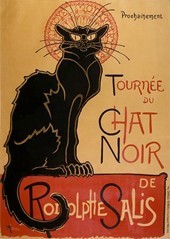
Contents
• Jules Cheret
• France's Belle Epoque
• Art Nouveau
• Paris in the 1900s
• Poster Art in Europe (c.1880-1910)
• The Inter-War Years: Art Deco
• After World War II
• "Art Posters" - Reproductions of Famous Paintings
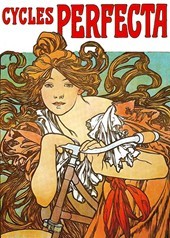
Colour Poster for Perfecta Bicycles
(1902) By Alphonse Mucha.
Jules Cheret
The evolution and development of poster art has always been closely linked to technical advances in printmaking, notably lithography. Thus although the lithographic process was invented by Alois Senefelder (1771-1834) as far back as 1798, it had little impact on posters until the advent of chromolithography later in the 19th century. Even then, it wasn't until Jules Cheret (1836-1932) invented his convenient "three stone lithographic process" in the 1860s - allowing lithographers to produce a wide spectrum of colours from just three stones - that low-cost colour posters at last became a reality.
Known as the "father of the fine art poster", Cheret not only developed a cheaper colour lithographic process, with richer more expressive colours, he also enhanced the aesthetic nature of the poster, endowed it with graceful designs (some influenced by Ukiyo-e woodblock prints from Japan, by artists like Hokusai and the younger Hiroshige) and transformed it into an independent work of art. Furthermore, he encouraged other painters to explore the genre: he later published his special book Maîtres de l'Affiche (Masters of the Poster), to promote the best designers. He also introduced the feminine form into his designs, for extra viewer-appeal. His female subjects became so popular that Parisians dubbed them Cherettes. In total, Cheret produced more than 1,000 posters, beginning with his 1867 advertisement for Sarah Bernardt's performance as Princess Desiree in the comedy La Biche au Bois. Honoured in 1928 with the opening of the Cheret Museum in Nice, Jules Cheret's posters, are some of the most highly sought-after items from the late 19th century.
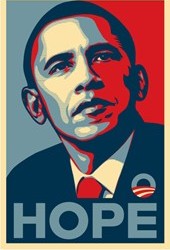
The Barack Obama "Hope Poster"
Designed c.2007 by Shepard Fairey.
France's Belle Epoque
By 1880, Cheret's new poster art form was attracting a number of other top designers such as Theophile Steinlen (1859-1923) responsible for the immortal poster "Cabaret Du Chat Noir", the great Toulouse-Lautrec(1864-1901) creator of numerous theatrical masterpieces, Pierre Bonnard(1867-1947), Edouard Vuillard (1868-1940). Their chosen subject matter featured Parisian night life, notably the theatres, music halls and cabarets of the city. The growing popularity of poster art led to the hosting of a major exhibition in 1884. The poster craze peaked during the decade of the 1890s. Poster artists were transforming Parisian streets into colourful art galleries, attaining cult status in the process, and causing theatre stars to insist on choosing their own favorite artist to do the poster for their show. More poster exhibitions were held, while publishers produced extra copies of the best posters to satisfy collectors. See also: Post-Impressionist Painting (c.1880-1905).
Famous Posters by Toulouse-Lautrec
- Moulin Rouge - La Goulue (1891)
- Ambassadeurs - Aristide Bruant (1892)
- La Reine de Joie (1892)
- Avril (Jane Avril) (1893)
- May Belfort (1895)
- Jane Avril (1899)
Art Nouveau
Interest in the poster was further enhanced in the 1890s by the emergence of Art Nouveau, a decorative style of art marked by flowing, curvilinear shapes, and drawing inspiration from Byzantine icons, Pre-Raphaelite romanticism and the Celtic Art Revival movement. Largely reliant upon form, line and colour, Art Nouveau proved the ideal poster design, and dominated the Parisian poster scene up until the late 1900s. Along the way it attracted a host of artists, including: Alphonse Mucha (1860-1939), Georges de Feure, Eugene Grasset (1845-1917) and Albert Guillaume (1873-1942). One of the first Art Nouveau masterpieces was the 1894 Sarah Bernhardt poster by Alphonse Mucha, the acknowledged master of the style. In 1896, the largest and most significant poster show to date, was held in Reims, with a display of 1,700 posters from all over Europe.
Famous Posters by Alphonse Mucha
- Hippodrome, Leona Dare, 1883
- Arlette Dorgere, 1890
- Moulin Rouge, Paris, Cancan, 1890
- Yvette Guilbert, 1891
- L'Etendard Francais, Bicycles, 1891
- Casino de Paris, Camille Stefani, 1891
- Folies Bergeres, Fleur de Lotus, 1893
- Sarah Bernhardt as Gismonda, 1894
- Vin Mariani, 1894
- Aperitif Mugnier, Dijon, 1894
- Quinquina Dubonnet, 1895
- Bieres de la Meuse, 1897
- Job Cigarette papers, 1898
- Benedictine, 1898
- Moet & Chandon, 1899
Note: the Art Nouveau style had an important influence on the various secession movements in Germany and Austria, including the Munich Secession (1892), the Berlin Secession (1898) and the Vienna Secession(1897).
Paris in the 1900s
Several events led to a decline in the Parisian poster scene during the 1900s. In 1900, Cheret abandoned poster art to concentrate on painting. In 1901, Toulouse Lautrec died. In 1904, Alphonse Mucha left Paris for America and then Czechoslovakia. And from 1905 onwards, Art Nouveau gradually lost its creative edge. Then, into this vacuum stepped a young Italian artist called Leonetto Cappiello (1875-1942), who focused on simplicity and impact. He appreciated the overriding need to create instant visual impact, as exemplified by his 1906 poster designs for Maurin Quina absinthe, and in so doing established a reputation as the father of modern advertising. Meantime, French poster art was further enriched by the arrival in Paris of Sergei Diaghilev(1872-1929) and the Ballets Russes, as well as the colourism and imagery of the revolutionary painting movements known as Fauvism (1905-6), and Cubism (1908-12).
Poster Art in Europe (c.1880-1910)
The poster craze spread rapidly to most of the main cities of Europe. Exhibitions of poster designs were staged in Britain (1894) and Italy (1894), Germany (1896), Switzerland (1896) and Russia (1897), and national styles soon established themselves: Dutch and Swiss posters tended to be neat, precise but restrained; German works were direct but lapsed into medieval gothic romanticism; Italian works were typically bold and melodramatic; while Russian posters were altogether more avant-garde.
Move Away From Art Nouveau
From 1905, there was a European-wide modernist trend to move away from the fussy decoration of Art Nouveau towards a simpler more function style. More and more poster artists switched from curvilinear shapes to rectilinear and geometric imagery, in order to sharpen the advertising message.
British Poster Art
During the mid 1890s most British designers, including Aubrey Beardsley, Will Owne, Dudley Hardy, and Walter Crane, tended to be heavily influenced by French Art Nouveau. Two of the first to free themselves were the "Beggarstaff Brothers" James Pryde and William Nicholson, who focused on far more simple types of design. Other UK post artists, some of whom specialized in producing works for the London Underground rail system, included Austin Cooper, Fred Taylor, Tom Purvis, Pat Keely and the American-born McKnight Kauffer.
Posters in Germany
German poster design was strongly influenced by Ludwig Hohlwein. Good at eliminating all non-essential graphics, he was noted for his use of shadow versus light, as well as his portrayals of people and animals. Other German post artists included Paul Schuerich, H.R.Erdt and the great abstractionist Lucian Bernhard.
It was Bernhard who initiated the German Plakatstil, or Poster Style. This style was characterized by extreme simplicity, represented by clean lines, minimal naturalism, flat colors and precise structure, as exemplified by his Sachplakat Poster (1906) for Preister matches. This Sachplakat (in English, "object poster") was to become a whole new genre of poster advertising.
Austrian Poster Art
One of Austria's best known poster designers was the Vienna-born Joseph Binder, noted for his geometrical, montage-type colour patterns. Others include the Viennese abstract artist Sascha Maurer, whose famous ski-posters also included elements of realism, as well as the Alfred Roller and Koloman Moser.
Swiss Poster Art
Positioned in the centre of Europe and speaking three national languages, Switzerland absorbed a great deal from its neighbours France, Germany and Italy. Leading Swiss Art Nouveau designers included Theophile Steinlen(1859-1923) and Eugene Grasset (1845-1917), both of whom were active at first in France, as well as Mangold, Emil Cardinaux, Baumberger, Stoecklin and Morach. If Italian poster art grew out of opera, Swiss posters depended on the country's status as a skiing destination.
Italian Poster Art
In Italy, posters were initially developed to promote the opera, under the German Art Nouveau artist, Adolfo Hohenstein (1854-1928). Although influenced by the French master Jules Cheret, Hohenstein became known for his luscious colour combinations and dramatic design - often executed in monumental-size works - features which would soon come to characterize the Italian national style. Examples of Hohenstein's posters include his designs for: Tosca by Puccini (1896), and the dramatic Madame Butterfly (1904).
Another leading Italian designer was Hohenstein's top pupil Leopoldo Metlicovitz (1868-1944). He was noted for his allegorical works, as exemplified by his award-winning design for the 1906 International Exposition. Metlicovitz's best pupil was Marcello Dudovich (1878-1962), who - partly under the influence of Franz Laskoff (1869-1918) - streamlined Art Nouveau (known in Italy as Stile Liberty) into a more modern style. Other noteworthy Italian poster artists included: Giovanni Mataloni, Marcello Dudovich, Aleardo Villa, Leopoldo Metlicovitz, Achille Mauzan, and Aleardo Terzi.
Lastly, one should not forget the peerless Leonetto Cappiello (1875-1942) (see above), who was active mainly in Paris and who eventually produced over 1,000 posters during a career spanning 40 years.
American Poster Art
The leading American poster designers were William Bradley and Edward Penfield. Others included, C.E. Millard, F.G. Cooper, C.B. Falls, H.M. Meyers, Harrison Fisher and Adolph Treidler. Edward Penfield, the pioneer of poster art in America, was actually more famous for his illustration and advertising placards for Harper's New Monthly Magazine. Cutting his teeth on ink and watercolour wash illustrations, Penfield went on to produce a large number of high quality fine art poster designs, notable for their abstract style and boldly simplified shapes. Unlike the already established artist Edward Penfield, William H. Bradley - known as the "American Beardsley" - made his reputation from poster design. Famous for producing The Twins (1894), the first American Art Nouveau poster, Bradley's style blended features of the Arts and Crafts Movement, Japanese block printing and Art Nouveau. Another American who contributed significantly to poster art and illustration was Norman Rockwell. Poster art with a social message was later exploited by Ben Shahn and other members of the Social Realism movement (c.1930-45) in America during the Depression era.
Poster Art During the Inter-War Years: Art Deco
After World War I, Art Nouveau was seen as old-fashioned and irrelevant when compared to the new modernist God of Science and the dynamism of the Machine. This new technological reality was better represented by modern art movements such as Cubism, Futurism, Expressionism and others. The first flowering of this new poster style was the Soviet Constructivism movement, inspired by Kasimir Malevich's avant-garde Suprematism movement, and led by Vladimir Tatlin, Alexander Rodchenko, and El Lissitsky. Ironically, it had more influence on Western design, through its impact on the Bauhaus and the De Stijl movement, than on posters in the USSR, which would soon be forced to adapt to Socialist Realism.
In Italy, Marinetti's Futurism seemed to be the dominant style until in the early 1920s, in the hands of Futurists Nicolay Diulgheroff, Lucio Venna and Fortunato Depero, it became too aggressive and was superceded by the quieter and more nostalgic Novecento style. Artists associated with this style included Campigli, Marcello Nizzoli and Mario Sironi, as well as Boccasile, Dudovich, and Riccobaldi.
More important than Constructivism, Futurism or Novecento was a new international style known as Art Deco. Showcased at the "Decorative Arts" Exposition of 1925 in Paris, and exactly in tune with the technological criteria of power and speed, Art Deco was marked by sleek geometrical forms, and strong, even garish, colours. The movement drew inspiration from many sources including Cubism, Futurism, Plakatstil, and even Constructivism. Exponents of Art Deco poster design include the Frenchman Adolphe Mouron Cassandre, noted for his sleek ocean liner posters, the German Ludwig Hohlwein, and the Swiss designers Otto Morach and Herbert Matter.
Art Deco dovetailed perfectly with the Italian love of dynamism and drama. Cappiello and Dudovich were both leading exponents, as was Federico Seneca (1891-1976) and Severo Pozzati (1895-1983). Progress was further stimulated by Fiat and Campari, the country's largest advertisers. Among Fiat's team of poster artists were Riccobaldi, Codognato, Dudovich, Metlicovitz, Sironi, and the great Giorgio De Chirico, while Campari relied on Hohenstein, Mauzan, Sacchetti, Laskoff, Nizzoli, Sinopico, Depero and Munari. Other directions were pursued by the Bauhaus-artist Xanti Schawinsky, and Marcello Nizzoli.
NOTE: During the 1930s and early 40s, the Nazis made full use of poster art in their vicious anti-semitic campaigns, a tactic exemplified by the poster artist Hans Schweitzer (1901-80) (better known as Mjolnir). An infamous example of Schweitzer's Nazi artwas the 1940 poster promoting the anti-Semitic film, "The Eternal Jew".
Swiss Designs
In the years following World War I, Switzerland developed a clear edge in graphic design, based on their mastery of technical and creative principles from Constructivism, the Dutch De Stijl movement led by Theo van Doesburg (1883-1931), and the Bauhaus Design School. An important figure inside the Swiss poster scene was Ernst Keller, who taught at the Zurich Design School where he nurtured the young group of designers who would later invent the world-famous International Typographic Style. Other leading teachers included the artists Jan Tschichold and Theo Ballmer. Other key factors which have contributed to Swiss excellence in this area, include a formidable printing industry and a willingness by the State and Cantonal authorities to invest in the necessary resources.
The Object Poster (Sachplakat)
First introduced by Lucian Bernhard (1906) the Object Poster (Sachplakat) style of minimalism was taken to a new level by Swiss designers. Examples include Otto Baumberger's 1923 textless poster for PKZ, and Peter Birkhauser's 1934 button poster also for PKZ. Meanwhile Swiss poster artists such as Herbert Matter and alter Herdeg demonstrated their advanced techniques in graphic design and photography with a series of Swiss travel posters.
Poster Art After World War II
Demise of the Object Poster
While the Sachplakat was still the No 1 style for Swiss product posters in the 1940s, thanks largely to the efforts of Basel designer-lithographers Stoecklin, Leupin, Birckhauser, and Brun, the 1950s witnessed the replacement of lithographic printing by cheaper offset printing. Other changes were also unavoidable. During the late 1940s and early 1950s, travel posters were increasingly replaced by photographs. Fortunately, Swiss graphic artists were making rapid strides in other areas. In particular, during the following decade, they launched a uniform, minimalist style known as The International Typographic Style because of its dependence on typographic elements, such as layout grids, sans serif typefaces, and black and white photography. Developed at the Basel Design School under Armin Hofmann and Emil Ruder, and at the Zurich Design School under Joseph Muller-Brockmann, all of whom had trained under Keller in Zurich school, the style was ideally suited to the postwar multi-lingual global marketplace, and by the 1970s, it had become the foremost graphic style in the world. However, for commercial reasons explained below, its application in the field of poster art was strictly limited.
Decline in Poster Advertising
After World War II, advertising-posters everywhere declined in importance as the market was effectively taken over by photography, radio and later television. In addition, labour-intensive lithography was also becoming prohibitively expensive, causing advertisers to switch to cheaper but less colourful methods like offset printing and screenprinting. As a result, by the 1960s - despite exceptional campaigns by post artists Bernard Villemot and Raymond Savignac - the poster was no more than a minor genre. Designers who might previously have been attracted to posters were now moving into illustration and other graphic designwork.
Poster Art in the 1960s and 1970s
In Italy, a series of spectacular images were produced for the national film industry, by Alfredo Capitani, Luigi Martinati, Anselmo Ballester and Ercole Brini. Another great Italian poster designer of the 1950s/1960s was Armando Testa.
In addition, there was a sudden surge in Psychedelic rock posters, originated by Wes Wilson. They appeared in the late 1960s, together with other popular music graphics like Milton Glaser's poster for Bob Dylan's 1967 'Greatest Hits' album. Widespread in San Francisco and New York, the music poster movement expanded into marketing and point-of-sale with free album-posters, as well as promotional concert posters. The craze for this sort of graphic artmirrored the demand for vintage posters in Paris during the late 19th century.
Note: an iconic poster dating from the 1968 student riots in Europe, and still popular today, was the silhouette style image of the Marxist revolutionary Che Guevara by the American artist Jim Fitzpatrick.
"Art Posters" - Reproductions of Famous Paintings
If original advertising posters have lost their appeal for commercial companies, the "art poster", replicating a famous work of art like The Mona Lisa, remains a popular item for consumers - especially during recessionary times. Today, it is possible to buy a reproduction of almost any major painting by any important painter from the Italian Renaissance to the Postmodernist era. Online poster publishers typically stock a wide selection of the most popular works.
Designer research: BREWERY LABEL ARTIST/ Sean Dominguez is a surfer and artist, for the past 13 years, he’s been a faithful devotee of The Lost Abbey.At this San Marcos brewery, the 49-year-old artist creates labels with images drawn from Bible stories and the history of Christianity.
http://allaboutbeer.com/lost-abbey-labels/
http://lostabbey.com/people/sean-dominguez/
http://www.thebeercircle.com/lost-abbey-label-artwork/
http://www.pacificsandiego.com/food-drink/beer-breweries/art-beer-label/
0 notes
Note
How many kids you wanna talk about? Cause I wanna know ten facts™ about: Fyf, Yvette, Idina (WG ver.), and personal fav Kestrel?
Man, I’d happily talk about all of my kids!! I’ll format this properly when I’m not on my phone, but for not have some facts! (from here)
FYF BROSCA
Really good at sewing clothes
Best friend is a lesbian bunny with a halberd, other best friend is a gay raccoon with a crossbow
Will adopt any child within 100 feet who knows was sarcasm is
Has a twin sister! Her name is Keziah and most people respond to this knowledge with “Oh gods, there’s two of them”
Loves gold jewelry while not being a fan of silver, and especially loves jewelry with brightly-coloured gems
A Bit of a pyromaniac, but oddly enough their own innate chaos allows them to control fire much better than one would expect
When I left the campaign, they had five daggers, two short swords, and a hidden blade on their person
Has a kink in their tail, either from someone stepping on it or someone closing a door on it
Not a virgin
Actually pretty damn smart and tactical-minded, but enjoys chaos way too much to rely on such ways of thinking
YVETTE SHEPARD
Had a younger brother named Xavier and an older sister named Zinnia on Mindoir
Was something of a minor celebrity in human communities for a year following the Mindoir attack
Lived on the Citadel after Mindoir and was Fucking Depressed the whole time, but she still considers that place to be about the only home she has left
Had a crush on Ashley in ME1 and absolutely no clue what to do about it
Also had a crush on Tali but she shut that down before she could even think of doing anything about it
Aside from Thane, feels most comfortable around Anderson, Joker, Cortez, and Samara. She clearly gravitates toward Old Soldier types
Can run at a dead sprint for over 100 yards with her armour on and her guns strapped to her hips. Or at least could before she got beat to shit by the Crucible breaking apart. Now her scooter goes about that fast and can go for even longer
She and Joker made an agreement at some point between ME1 and ME2 where if and when they got to retire, if neither of them found someone willing to “put up with our insufferable bullshit”, they’d get married. Whether or not they actually do so depends on the AU, but no matter what they’re ride or die
Really appreciated Vega’s presence on the Normandy as everything was going to shit. The two of them clicked really well, and they even dance to old Earth songs sometimes, mostly Andy Grammer’s “Honey, I’m Good”
Falling for Thane scared the living shit out of her at first, entirely because of what this meant about her perception of herself. As it turns out, the two of them had a very similar perspective on their own personhood, which didn’t leave much room for romance. Or so they thought
IDINA DOC
The butchest Idina of them all, and even then it’s mostly a very soft butch. Short hair, deep desire to provide for and protect her wife, that kind of thing
Has brown eyes!! I always forget that!!
The only time her dagger has ever been used against a living person was to kill her fiancée, in order to help her gain a spell back that didn’t end up being useful. That guilt followed Idina forevermore
I cannot believe she was only 20 when she died. How did I let this happen
After much consideration I’ve realized that she doesn’t hate footwear, she just prefers the feeling of grass beneath her feet. However, when it’s wet or cold or dangerous out, she’s sensible and wears boots. Her feet are still covered in hard skin though
At one point I thought she might have a crush on a male character in Wildgard, but she tapped me on the back, pointed to Lila, and sweetly informed me that she’s a whole-ass lesbian
She probably knew enough Elvish to be able to sing along to her favourite songs in Sarea’s repertoire
Just wanted to find someplace to call home. She loved travelling a lot but she really and truly wanted to put an anchor down somewhere
100% had a beautiful wedding with Lila in the afterlife. Lila had giant fuckoff antlers and the train of Idina’s dress started at her hips and trailed behind her forever. It was very, very sweet and they’re very happy
She and her father cried when they were reunited in the afterlife, and neither of them had an easy time processing how their loved one was killed. But they love each other dearly, even after all this time
KESTREL SCOT
A firm believer in the phrase “Confidence is key”. Does she know what she’s doing? About 50% of the time maybe. Does she look like she knows what she’s doing? Always
If she doesn’t look like she knows what she’s doing, something has gone extremely wrong, or she’s trying to flirt
Thought she liked girls, then realized she was girls, then realized she could do both and has never looked back
That said, is perfectly capable of liking guys. She just hasn’t found many guys she likes
Apparently once had a dream so awkward that she refused outright to tell anyone what happened. Esteban knows the most, and therefore knows that it somehow involved Thinn and hogtying. He wisely did not ask for further information
Hates minimalism with a passion, leaves clothes all around her room in protest
Exactly three people have called her Kess before, the most recent being Joelle. Joelle is a lot less insufferable than the other two who have called her by that name, which says something about the people Kestrel used to know
While she doesn’t do it as quickly or as efficiently as most of the other Trackers, she still loves cleaning and maintaining her weapons. It’s therapeutic to spend time with them like that
Honestly wouldn’t mind firing a longbow at some point, but has either never done so or has only done it so long ago that she doesn’t remember how to do it
Her favourite look is ripped-up tights under anything else. Shorts, equally-ripped jeans, an actually nice cocktail dress. She loves it
#Man I don’t talk about Hazards or Yvette nearly enough#Thank you Chel!!#QR ‘n A#patchothepuppy#Fyf Brosca#Yvette Shepard#Idina Doc#Hazard Team#Kestrel Scot
0 notes